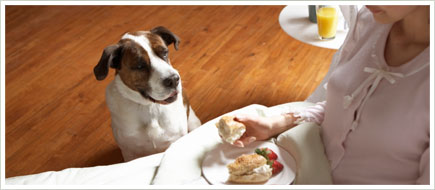We are a nation of dog lovers, so naturally we love rewarding them for good behaviour, for advances in their training or occasionally, just because they are so very cute! However, dogs are incredibly intelligent so it’s important we always reward them with intention. It may seem cruel limiting rewards for your dog, but it’s actually in their best interest. Dogs do need to know to do something right to get a reward, as this strengthens their trust in you, strengthens your bond together and makes the world much safer because they will learn to listen to you when they need to.
Here are some top tips to help your dog gain the most from rewards:
Reward At The Time Rewards Are Needed
To help your dog understand exactly what he is being rewarded for, you need to make sure you are quick to offer the reward at the exact moment he does what you want him to do. This will enable him to quickly make the connection between the two. For example; when teaching your dog to sit, the reward should be given exactly when your dog’s bum meets the ground. This will enable him to associate what he has done physically with the reward, therefore anchoring the action you want him to do. So giving him the treat before he sits or after will not make it easy for him to connect the action to the reward, which will make training much harder. To make the process easier for you, think about the exact physical action your dog needs to take to satisfy your command. When you have identified that physical action, know to reward your dog exactly when that physical action is performed.
Dog Treats
Treating your dog to tasty morsels is a great thing, and it’s something you will always give your dog for reward or for stimulation in toys like treat balls. However, if you provide a food treat every single time your dog does the right thing, the treats will no longer be exciting for the dog and he may gain weight depending on the treats you are providing. The dog may also only follow your command when he fancies a treat. Leaning towards other rewards like access to a favourite toy, vocal or physical rewards like ‘good boy’ or a pat on the head is a good direction to go in. Treats are a great thing, but not continually during training.
Timing The Rewards
In order to keep your dog mentally stimulated and to further secure his grasp of command and reward, you will want to vary the timing of the command. For example; if you are teaching your dog to sit, and have successfully taught them to sit on command, further the training by commanding them to sit for longer. Try 30 seconds, 1 minute and longer before providing a reward. You could also try walking away from the dog until you command them to come to you. Doing this keeps the dog guessing and keeps the game interesting for him.
Increase Rewards Depending On Performance
Make sure you’re varying the levels of dog treats so that he learns to always try to do his best. If he is simply obeying commands, opt for simple rewards. If he is making huge progress and does really well at a new level of training you should shower him with praise and rewards.
Be In Tune With Your Dog
Dogs do have their own minds and it is important you become in tune with your dog so that you understand when he is most receptive to training. It may be that your dog responds best to training after his morning walk, during his morning walk or later on in the day when he is more calm. Try training at different times and see when your dog is most responsive.
Reward Your Dog Creatively
Remember to try to be creative with the rewards you give your dog. Different dogs respond to different rewards. The sooner you identify what your dog is happy about and what gets him really excited, the sooner you will be able to make further progress with your training.

